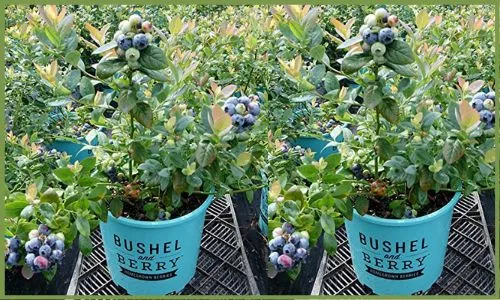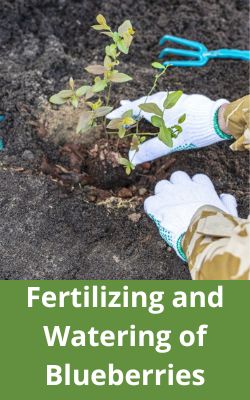If you’re looking to grow your own blueberries in pots, here are five tips to help you get started! From choosing the right variety to planting and care, these tips will have you harvesting delicious berries in no time. So pick up some soil, a pot and some blueberries, and get growing!

Table of Contents
Blueberry Varieties for Pots
When it comes to blueberries, there are many different varieties available. However, not all of them are well-suited for growing in pots. If you’re looking for blueberry varieties that will do well in containers, here are a few that you might want to consider:
1. Bluecrop: This variety is known for its large berries and vigorous growth habit. It’s a good choice for beginners, as it’s relatively easy to grow and maintain.
2. Jersey: Another good option for those new to growing blueberries in pots is the Jersey variety. This one produces smaller berries than Bluecrop but is still fairly easy to care for.

3. Chandler: If you’re looking for a high-yielding variety, Chandler is a good option. It produces large berries and has a relatively compact growth habit, making it ideal for small spaces like balconies or patios.
4. Elliot: Elliot is another high-yielding variety with large berries. It’s slightly less compact than Chandler, so it may need more space to reach its full potential. However, its fruit production can be quite impressive if given enough room to grow.
Pot Size and Soil
When it comes to pot size, bigger is always better for blueberries. They need room to grow their roots, and a larger pot will provide that. The soil you use is also important. Blueberries prefer an acidic soil with a pH of 4.5-5.5. If your soil is not acidic enough, you can add sulfur or composted pine needles to lower the pH.
Fertilizing and Watering
If you want your blueberries to produce loads of fruit, then you need to give them the right care – including regular fertilizing and watering. Let’s take a closer look at both of these important topics.
When it comes to fertilizing, experts recommend using an organic fertilizer that is high in nitrogen. Apply the fertilizer around the base of the plant, taking care not to get any on the leaves or stems. You should do this every four weeks or so during the growing season.
As for watering, it’s important to keep the soil moist but not waterlogged. The best way to do this is to water deeply and less often, rather than giving the plants a little bit of water every day. During hot weather, you may need to water your blueberries twice a week or even more frequently.
So there you have it – a few tips on how to fertilize and water your blueberry plants for optimum fruit production!
Light Requirements
Blueberries are a type of fruit that grows best in full sunlight. If you’re growing blueberries in a pot, make sure the pot is big enough to accommodate the roots and has drainage holes to allow excess water to escape. Place the pot in an area that gets at least six hours of direct sunlight each day.
Training and Pruning
If you’re growing blueberries in a pot, you’ll need to provide some extra care to ensure that your plant stays healthy and productive. One important task is training and pruning the plant to encourage growth in the desired direction.

Pruning blueberry plants is relatively simple. Begin by removing any dead or damaged branches. Next, cut back any branches that are growing inward toward the center of the plant, as well as any that are crossing over each other. Finally, trim back any long or leggy stems. These steps will help keep your plant compact and encourage new growth.
Training your blueberry plant is also important for its health and productivity. You can train it to grow up a trellis or support structure using soft ties or twine. Be sure to choose a location that receives full sun for best results.

